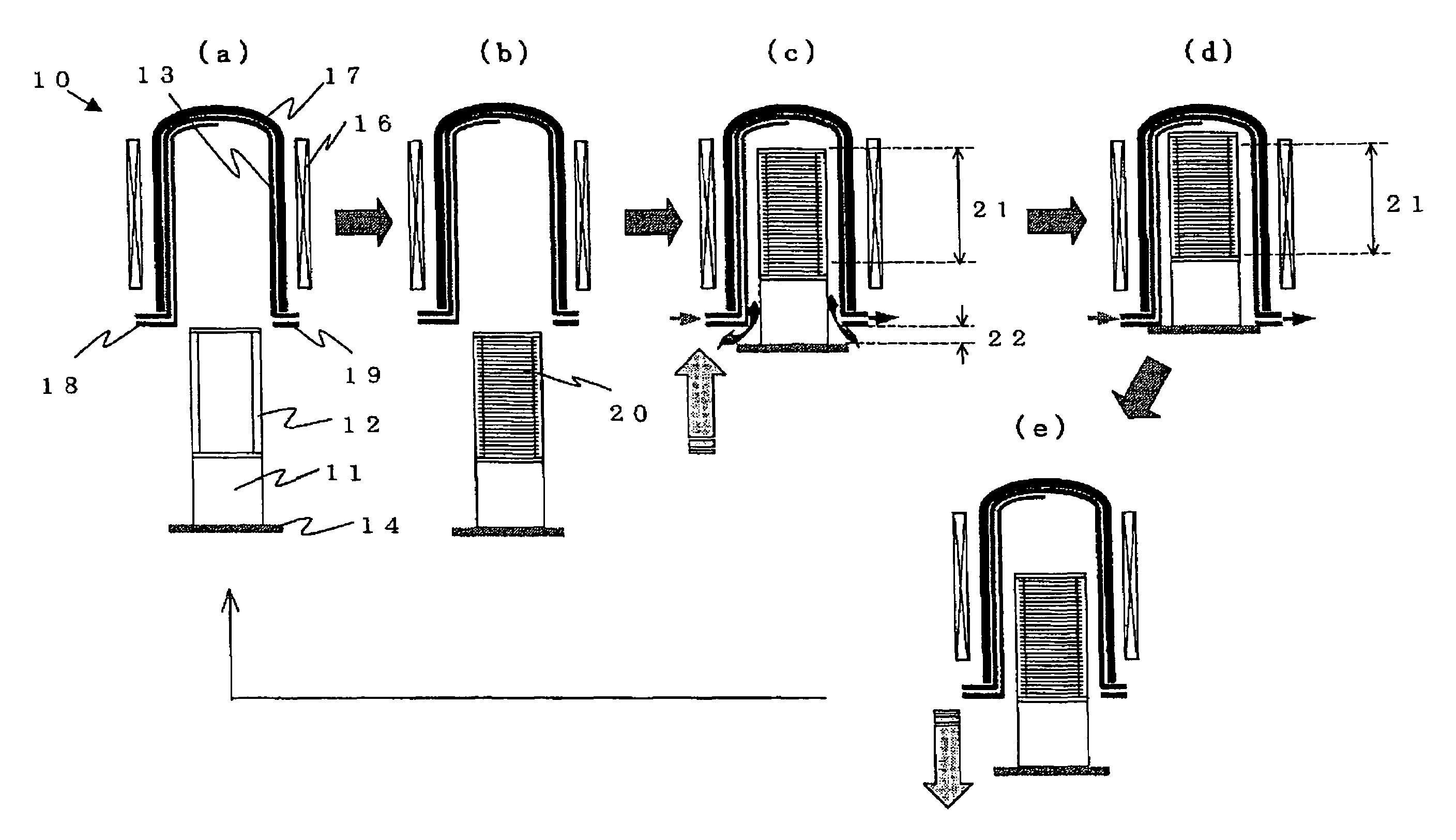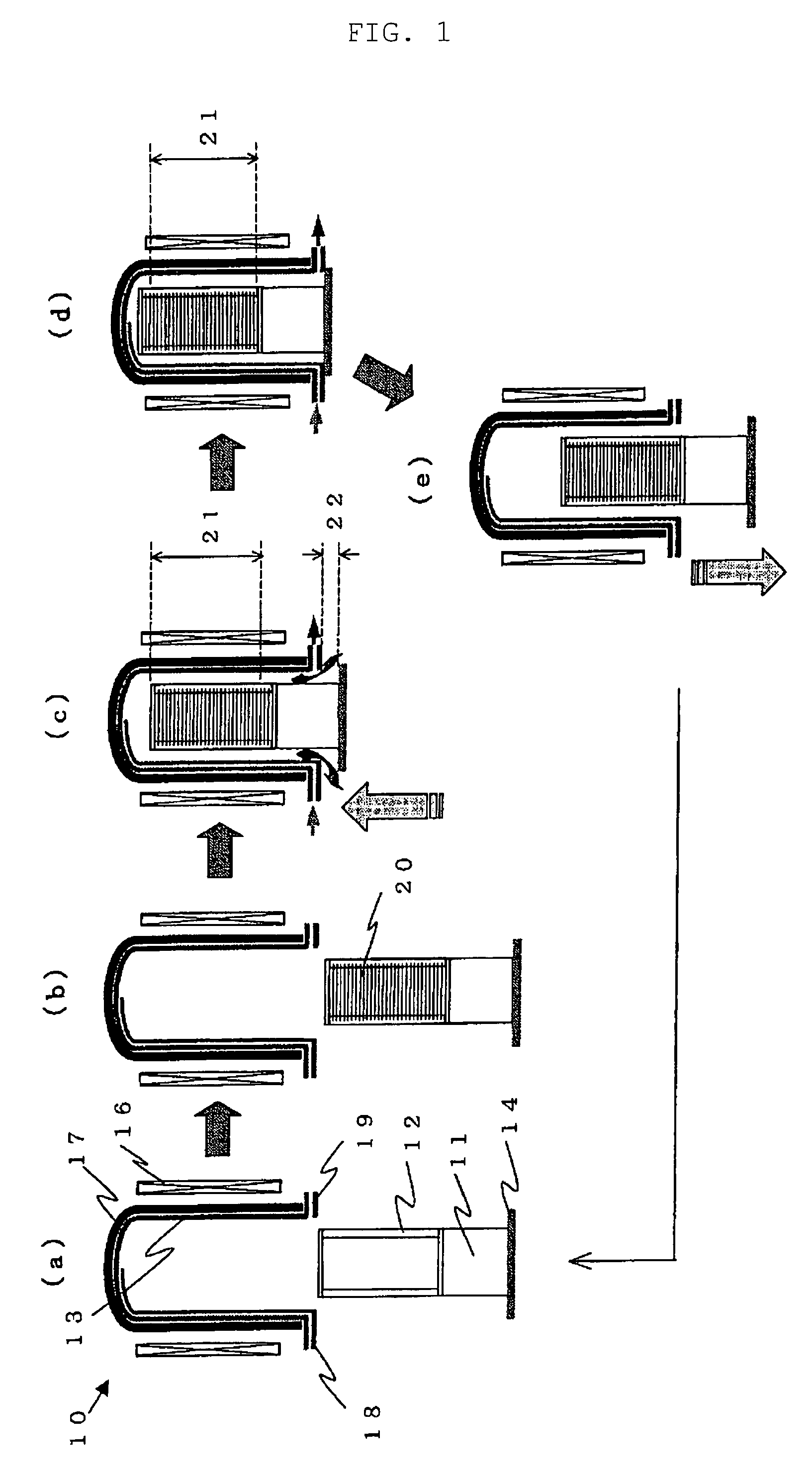Method for producing annealed wafer and annealed wafer
a technology of annealing and annealing wafers, which is applied in the direction of semiconductor/solid-state device manufacturing, basic electric elements, electric apparatus, etc., can solve the problems of inability to ignore the size of the grown-in defect, the resistivity of the wafer cannot be sure prevented from changing before and after heat treatment, and the effect of low-density grown-in defects
- Summary
- Abstract
- Description
- Claims
- Application Information
AI Technical Summary
Benefits of technology
Problems solved by technology
Method used
Image
Examples
example 1
[0063]Silicon wafers having a diameter of 200 mm were heat-treated according to the procedure as shown in FIG. 1. The silicon wafer used in the heat treatment was a P type (doped with boron) and had a resistivity of 8-12 Ωcm, a plane orientation of (100), and a nitrogen concentration of 8×1013 atoms / cm3.
[0064]First, fifty silicon wafers 20 were placed in the boat 12 supported by the support member 11 (FIG. 1(a)(b)). In this case, five wafers from the upper side of the boat 12 and ten wafers from the lower side were set to serve as dummy wafers that were not to be products, and the semiconductor wafers to be products were placed between the dummy wafers placed in the upper side and in the lower side of the boat 12. The length of the part for placing wafers in the boat 12 was 945 mm.
[0065]Next, the boat 12 in which the silicon wafers 20 were placed was inserted in the furnace tube 13 (FIG. 1(c)). That is, into the furnace in which the temperature of the thermally uniform portion 21 wa...
example 2
[0070]Annealed wafers were produced in the same method as Example 1 except that when the boat 12 in which the silicon wafers 20 were placed was inserted into the furnace tube 13 (FIG. 1(c)), after the interval 22 between the furnace tube 13 and the shutter 14 became 25 mm by inserting the boat 12 at a constant rate of 100 mm / min, the boat 12 was inserted at an insertion rate of 25 mm / min and the furnace tube 13 was blocked in with the shutter 14. In addition, the state that the entirety of the silicon wafers to be products was in the thermally uniform portion 21 and that the interval 22 between the furnace tube 13 and the shutter 14 existed was maintained for 1 min.
[0071]Similarly to Example 1, in the both wafers in the bottom and the top, resistivity was 8-12 Ωcm. Thereby, it was found that the resistivity hardly changed before and after the heat treatment, and that there was extremely little contamination with phosphorous during the heat treatment (both resistivity and SIMS profil...
PUM
 Login to View More
Login to View More Abstract
Description
Claims
Application Information
 Login to View More
Login to View More - R&D
- Intellectual Property
- Life Sciences
- Materials
- Tech Scout
- Unparalleled Data Quality
- Higher Quality Content
- 60% Fewer Hallucinations
Browse by: Latest US Patents, China's latest patents, Technical Efficacy Thesaurus, Application Domain, Technology Topic, Popular Technical Reports.
© 2025 PatSnap. All rights reserved.Legal|Privacy policy|Modern Slavery Act Transparency Statement|Sitemap|About US| Contact US: help@patsnap.com



